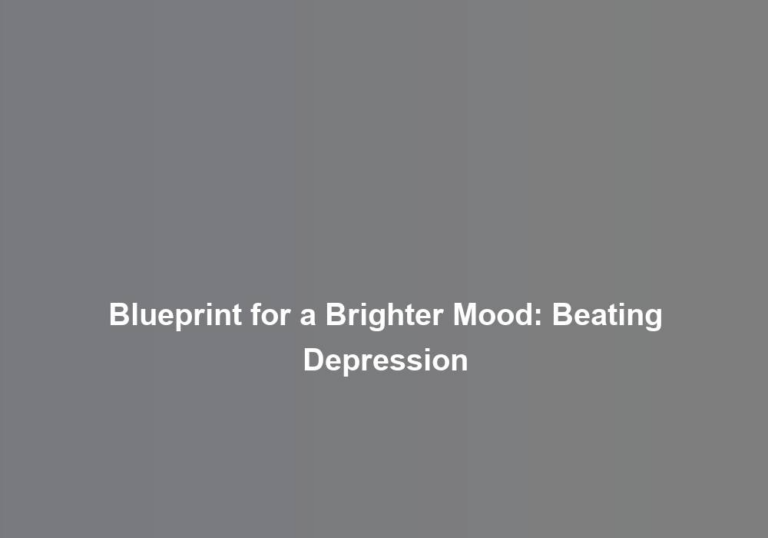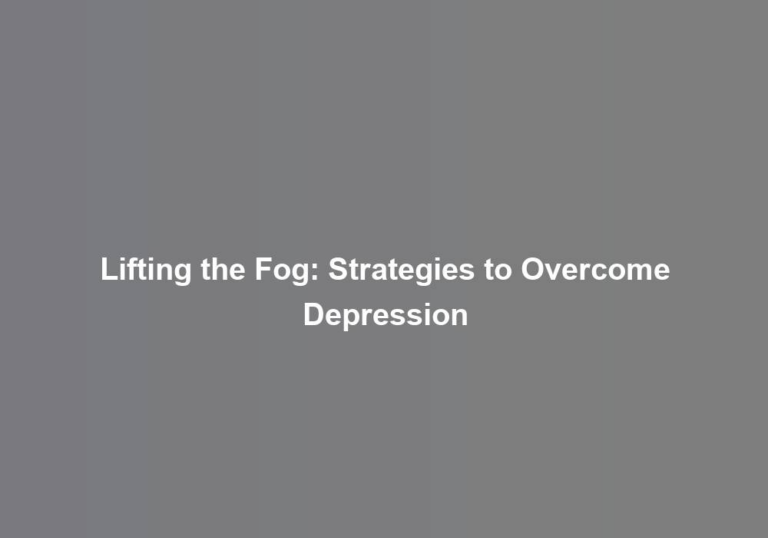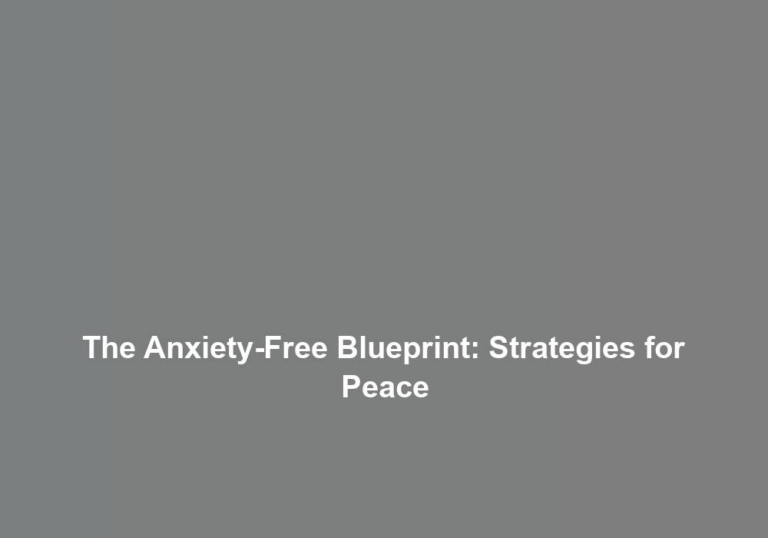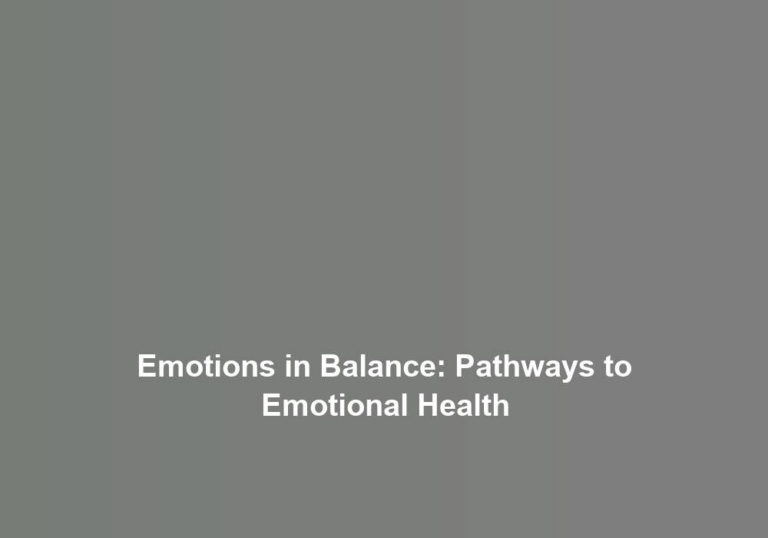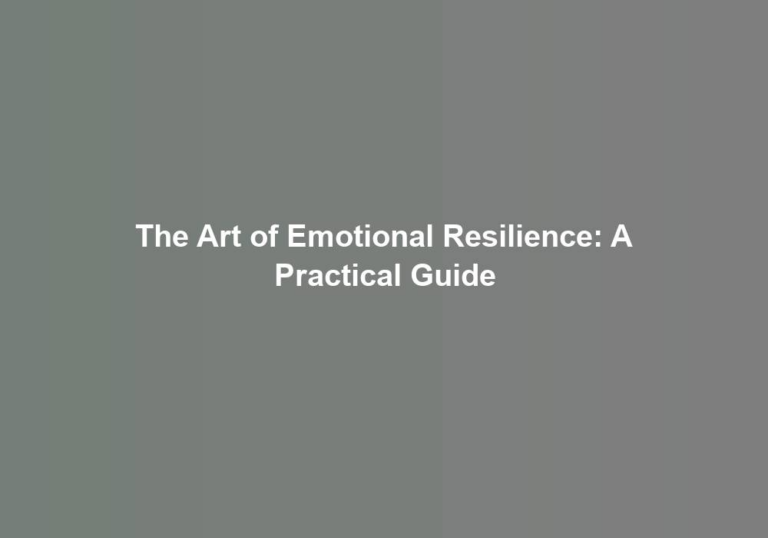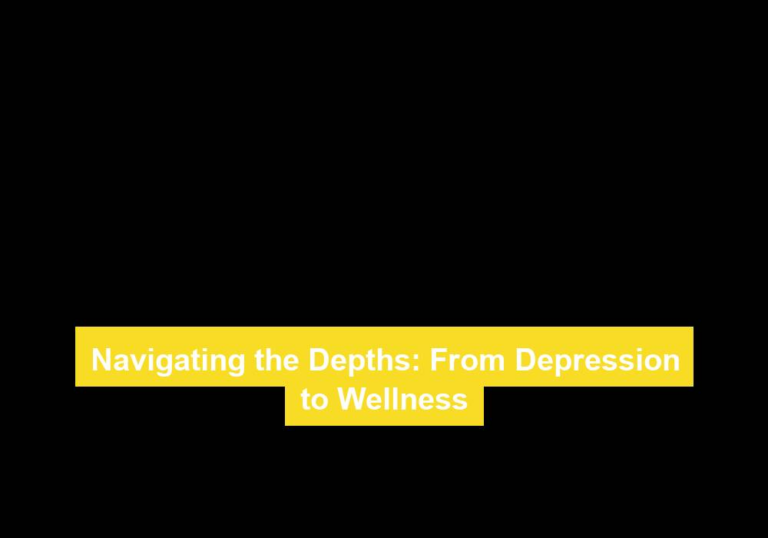Anxiety Unpacked: Tools for a Calmer Mind
Feeling like youG??re walking on eggshells? Dealing with anxiety can often make you feel like youG??re on the edge, but there are ways to find balance and calm. In todayG??s fast-paced world, itG??s common to experience feelings of unease and worry, and the tools to manage anxiety are more essential than ever. You might be surprised to find out how a few simple techniques can make a significant difference in your daily life.
Understanding Anxiety
Understanding Anxiety can be achieved by recognizing its physical and emotional symptoms and their impact on your daily life. ItG??s important to understand that anxiety is more than just feeling stressed or worried. It can manifest in physical symptoms such as rapid heartbeat, sweating, and trembling, as well as emotional symptoms like excessive fear, restlessness, and difficulty concentrating. These symptoms can significantly affect your daily activities, work, and relationships. Emotional triggers, such as overwhelming responsibilities or social situations, can exacerbate these symptoms, making it crucial to identify and understand them.
When it comes to coping mechanisms for anxiety, itG??s essential to focus on mental health and coping strategies that work for you. These strategies could include mindfulness techniques, deep breathing exercises, or engaging in physical activities that promote relaxation. Additionally, developing a strong support system with friends, family, or a therapist can provide a valuable outlet for expressing your feelings and receiving support.
Understanding anxiety also involves recognizing the role of negative thought patterns and learning to challenge them. This can be achieved through cognitive-behavioral techniques and reframing your perspective on stressful situations. Taking care of your mental health through regular exercise, a balanced diet, and sufficient sleep can also contribute to managing anxiety.
Mindfulness Practices
LetG??s talk about some practical mindfulness practices that can help you manage anxiety. Breathing exercises, grounding techniques, and meditation are effective tools to bring your focus back to the present moment and alleviate feelings of worry and unease. These practices can anchor you in the here and now, providing a sense of calm and control amidst the chaos of everyday life.
Breathing Exercises
To practice mindfulness through breathing exercises, focus on your breath as it naturally flows in and out of your body. By incorporating diaphragmatic breathing, you can activate the relaxation response in your body, promoting a sense of calm and well-being. Utilize breathwork techniques to engage in intentional breathing patterns that aid in stress reduction, helping you to feel more grounded and centered. As you connect with your breath, visualize inhaling positivity and exhaling negativity, fostering a sense of inner peace. Remember that mindful breathing is a powerful tool that you can use anywhere, anytime to anchor yourself in the present moment and alleviate anxiety. Embrace the transformative potential of these simple yet impactful exercises to cultivate a calmer mind.
Grounding Techniques
Engage in grounding techniques to anchor yourself in the present moment and foster a sense of stability and calm. Sensory grounding involves using your senses to bring your attention to the here and now. Try focusing on the feeling of your feet on the ground, the sound of birds chirping, or the scent of a calming essential oil. These simple sensory cues can help ground you in the present and alleviate anxiety. Additionally, mind-body relaxation techniques, such as progressive muscle relaxation or body scan meditation, can help release tension and promote a sense of calm. By intentionally connecting with your senses and practicing mind-body relaxation, you can cultivate a greater awareness of the present moment and find a sense of peace within yourself.
Meditation for Anxiety
As you ground yourself in the present moment and alleviate anxiety through sensory cues and relaxation techniques, consider incorporating mindfulness meditation practices to further calm your mind and address feelings of anxiety.
- Meditation Benefits: Experience reduced stress, improved focus, and a sense of inner peace.
- Engage in deep breathing exercises to promote relaxation and decrease the impact of anxious thoughts.
- Cultivate self-awareness by observing your thoughts without judgment, leading to a more balanced perspective and reduced anxiety.
- Enhance emotional regulation, allowing you to respond to stressors with greater ease and composure.
Stress-Reducing Exercises
You can start reducing stress by practicing simple breathing techniques, which can help calm your mind and relax your body. Mindfulness practice, such as meditation or yoga, can also be beneficial in reducing stress and increasing mental clarity. Additionally, engaging in physical activity like walking, running, or dancing can release endorphins and help alleviate stress.
Breathing Techniques
Breathing techniques are effective stress-reducing exercises that can help you achieve a calmer state of mind. These techniques, such as deep breathing, trigger the bodyG??s relaxation response, helping you feel more at ease and centered. Here are some key benefits of incorporating breathing techniques into your daily routine:
- Promotes Relaxation: Deep breathing can help calm your mind and reduce feelings of stress and anxiety.
- Try diaphragmatic breathing, also known as belly breathing, to fully engage your diaphragm and promote relaxation.
- Improves Focus: Practicing breathing techniques can enhance your ability to concentrate and stay present in the moment.
- Incorporate mindfulness breathing exercises to improve focus and awareness.
- Reduces Physical Symptoms: Deep breathing can alleviate physical symptoms of stress, such as tension and muscle tightness.
Incorporating these breathing techniques into your day can help foster a sense of calm and belonging in your life.
Mindfulness Practice
To further cultivate a calmer mind, consider incorporating mindfulness practice, which involves stress-reducing exercises to enhance your mental well-being and emotional balance. Mindfulness benefits are numerous and include improved focus, reduced anxiety, and enhanced self-awareness. Engaging in relaxation techniques such as deep breathing, body scans, and meditation can help you stay present and alleviate stress. These practices encourage you to observe your thoughts and feelings without judgment, fostering a sense of inner peace. By integrating mindfulness into your daily routine, you can develop a greater capacity to manage challenging emotions and navigate lifeG??s complexities with more ease. Embracing mindfulness empowers you to cultivate a deeper connection with yourself and others, promoting a sense of belonging and harmony within your inner world.
Physical Activity
Incorporating physical activity into your routine can be a powerful way to reduce stress and promote a calmer state of mind. Whether itG??s outdoor workouts, yoga, or simple exercises, moving your body can have a profound impact on your mental health. Consider the following stress-relieving exercises to help you find your calm:
- Outdoor Workouts: Engaging in activities such as hiking, cycling, or running outdoors can provide a refreshing change of scenery and a dose of natural tranquility.
- Exercise Routines: Establishing a consistent exercise routine, whether itG??s a morning yoga session or an evening walk, can help you create a sense of structure and stability in your day.
- Mental Health Benefits: Regular physical activity has been linked to improved mood, reduced anxiety, and enhanced overall well-being.
Prioritize your mental health by incorporating these stress-reducing exercises into your daily life.
Cognitive Behavioral Techniques
Explore how CBT techniques can help you reframe negative thought patterns and improve your mental well-being. Thought restructuring is a core component of Cognitive Behavioral Therapy (CBT), which aims to challenge and change unhelpful thought patterns. By identifying and reframing these negative thoughts, you can gain a more balanced perspective and reduce anxiety. CBT also emphasizes stress management, offering coping strategies to deal with challenging situations. This can help you build resilience and navigate stress more effectively, ultimately contributing to a calmer mind.
Incorporating cognitive behavioral techniques into your daily life can enhance emotional regulation. Through CBT, you can learn to recognize and understand your emotions, as well as develop skills to manage them in a healthy way. This can lead to a greater sense of control over your emotional responses, fostering a more stable and balanced mental state.
ItG??s important to note that these techniques require practice and patience. Engaging in CBT exercises and activities regularly can help reinforce positive changes in your thinking patterns and emotional responses. By actively participating in the process, you can gradually experience a shift towards a calmer and more resilient mindset.
Relaxation and Breathing Exercises
Consider incorporating relaxation and breathing exercises into your daily routine to help alleviate stress and promote a calmer state of mind. These practices can effectively support your journey towards a more balanced and peaceful life. Here are some simple and effective techniques to get you started:
-
Deep Breathing: Deep breathing exercises can be done anywhere and at any time. Take a moment to sit or lie down comfortably, close your eyes, and take a slow, deep breath in through your nose, allowing your abdomen to expand. Then exhale slowly through your mouth, releasing any tension or worries with each breath. Repeat this process for several minutes, focusing on the sensation of your breath moving in and out of your body.
-
Progressive Relaxation: This technique involves systematically tensing and then relaxing different muscle groups in your body. Start by tensing the muscles in your toes for a few seconds, then release and relax them. Gradually work your way up through your body, tensing and relaxing each muscle group, such as your legs, abdomen, arms, and facial muscles. This method can help release physical tension and promote a sense of calmness.
-
Mindful Breathing: Mindful breathing involves paying attention to each breath as it enters and leaves your body. Find a quiet space, sit in a comfortable position, and simply focus on the sensation of your breath. When your mind starts to wander, gently bring your focus back to your breath, allowing yourself to be fully present in the moment.
Incorporating these relaxation and breathing exercises into your daily routine can help you cultivate a sense of inner peace and reduce the impact of stress on your well-being.
Creating a Supportive Environment
Establish a supportive environment conducive to your relaxation and breathing practices by decluttering your physical space and creating a peaceful atmosphere for your daily routine. Emotional support plays a crucial role in managing anxiety and stress. Surround yourself with people who provide positive reinforcement and understanding. ItG??s important to communicate your needs to those around you, whether itG??s a close friend, family member, or partner. Let them know how they can best support you during challenging times.
In addition to emotional support, your physical environment can greatly impact your mental well-being. Create a space that promotes relaxation and calmness. Consider incorporating elements such as soft lighting, soothing colors, and comfortable furniture. Decluttering your space not only helps clear your mind but also reduces feelings of chaos and overwhelm.
Furthermore, consider engaging in activities that bring you joy and peace. Whether itG??s listening to calming music, practicing yoga, or spending time in nature, find what resonates with you and incorporate it into your daily routine. By surrounding yourself with positivity and tranquility, you can cultivate a supportive environment that nurtures your mental and emotional health.
Ultimately, prioritizing emotional support and positive reinforcement from both your relationships and surroundings can contribute to a sense of belonging and comfort. ItG??s essential to create an environment that fosters relaxation and peace, allowing you to better manage anxiety and stress.
Conclusion
Now, armed with these tools, you can take back control from anxiety. Try incorporating mindfulness into your daily routine, like Sarah did. She found that by practicing mindfulness, she was able to quiet her racing thoughts and find moments of peace. Remember, itG??s okay to seek support and use these techniques to create a calmer mind. You deserve to feel at ease and in control.


